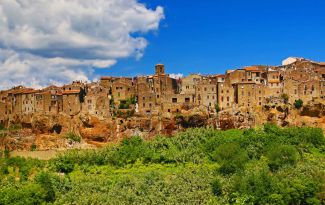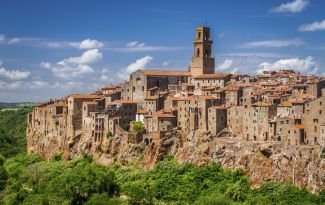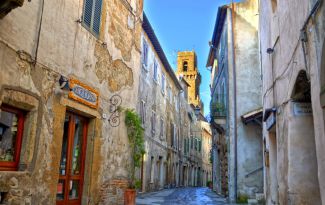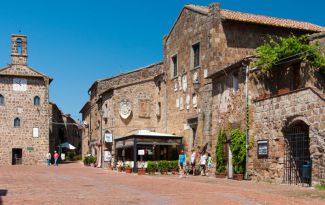the villages of tufo
PitiglianoAfter many bends of hard sand, a beautiful village emerges, its houses often mistaken for the rocks beneath them. This town has remained unchanged for centuries: a labyrinth of narrow streets that follow one another. Sometimes, the alleys are so narrow that it's difficult to navigate through them. In the village of Pitigliano, different eras (Etruscan, Roman, and Medieval) have left their marks. The inhabitants of this village carved into layers of tuff stone, creating a town with underground passages featuring cellars, tombs, and wells.
The remains of ancient civilizations are not only found in Pitigliano but also in the surrounding area, including the towns of Sovana and Sorano. We also recommend visiting the Etruscan necropolis.
Sorano and Sovana
The town of Sorano is located in the heart of Tuscany in the Tufo area.It contains many burial sites, roads, mines, numerous ancient buildings, and remains from the Etruscan and Roman periods. The old part of Sorano is a highlight where time seems to have stood still since the Middle Ages. The houses are made of tuff stone with arches and narrow streets leading to a main road where the citadel stands. Walking through these alleys, you can enjoy the view of St. Nicolas Church. Built in the Middle Ages, this church has undergone many transformations since. The church serves as a connection between the old town and the citadel, originally the residence of the Orsini family.
Sovana is considered one of the most beautiful towns of "Borgo d’Italia". It's unlikely that a village with so few houses and only one road was once a city with headquarters and the birthplace of a pope. In Sovana, there are monuments representing the political power of the church. Examples include the cathedral, the Rocca, and the spiritual Aldobrandeschi. The Rocca Aldobrandescha is located within the medieval walls and is also an impressive ruin. This fortress was built in the 11th century and was later maintained and renovated by the Medici and the residents of Siena, with underground passages connecting it to other parts of Sovana, providing easy passage for the army. After the 17th century, this underground passage lost its military function. Near the entrance of the underground area are ancient blocks of Etruscan walls dating back to the 6th century.













